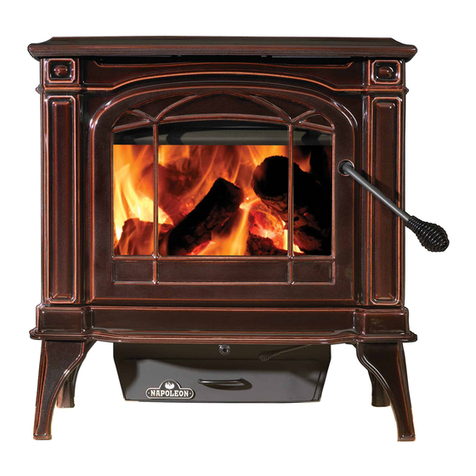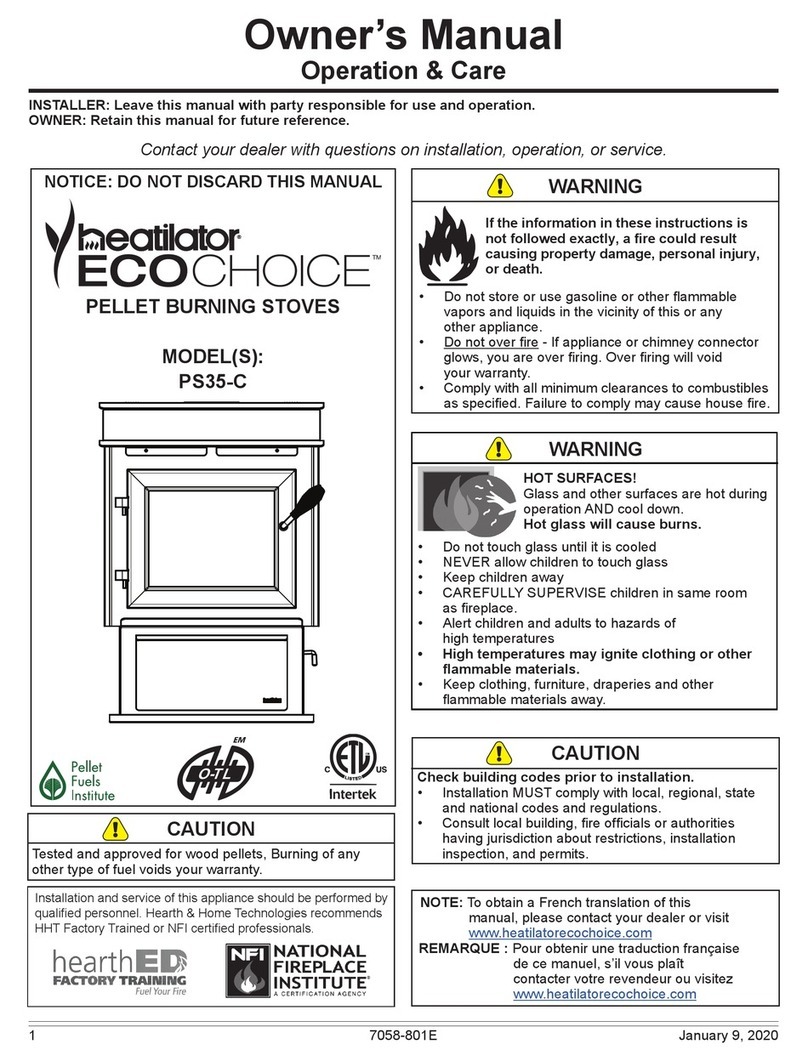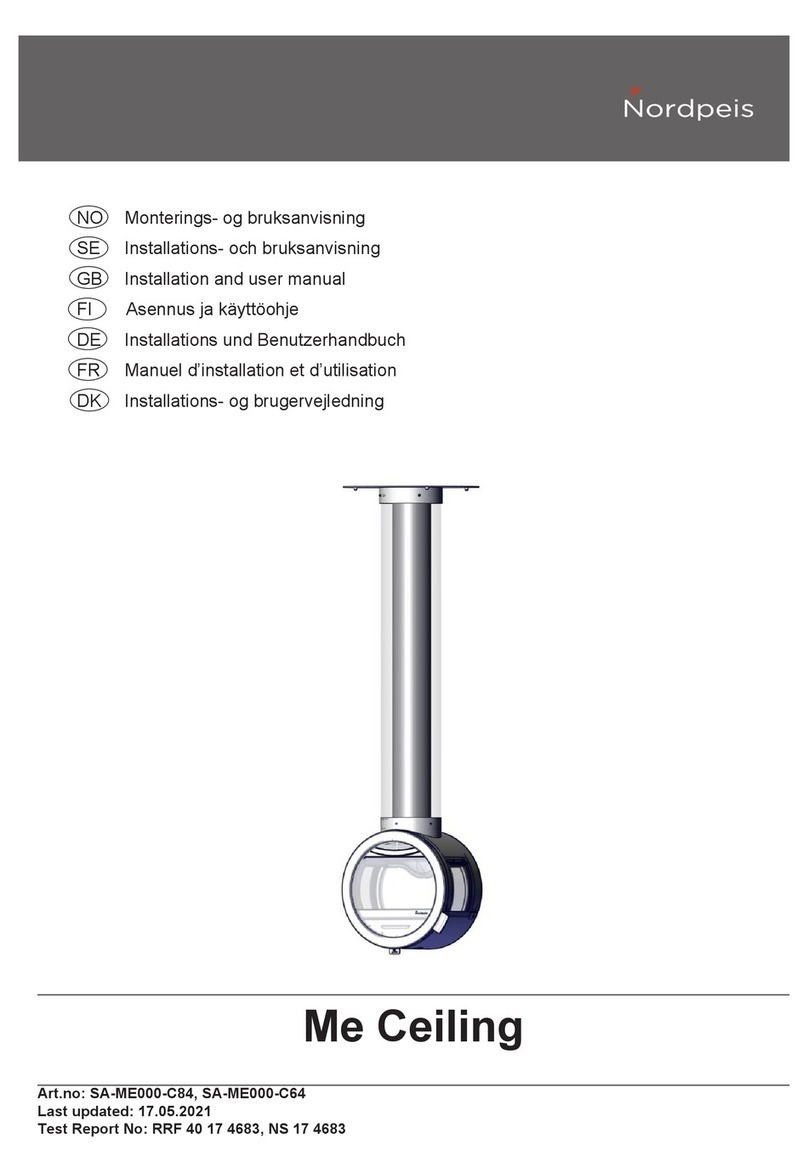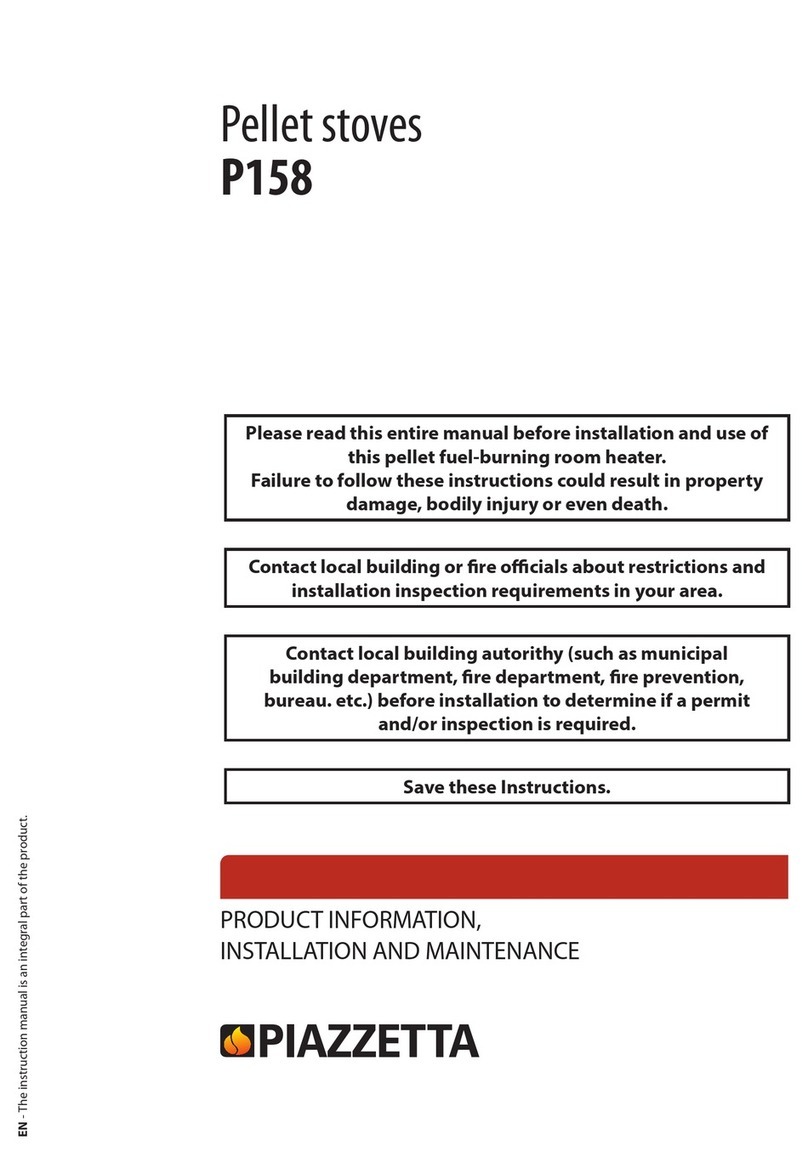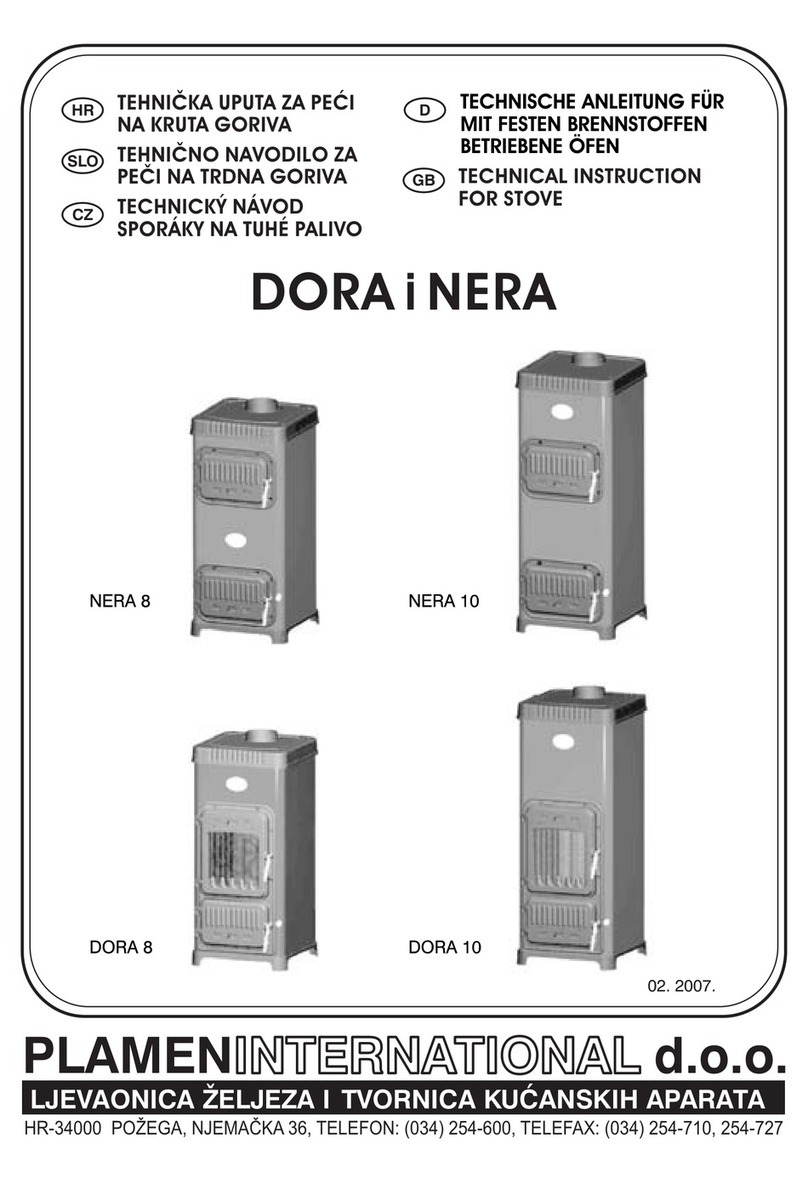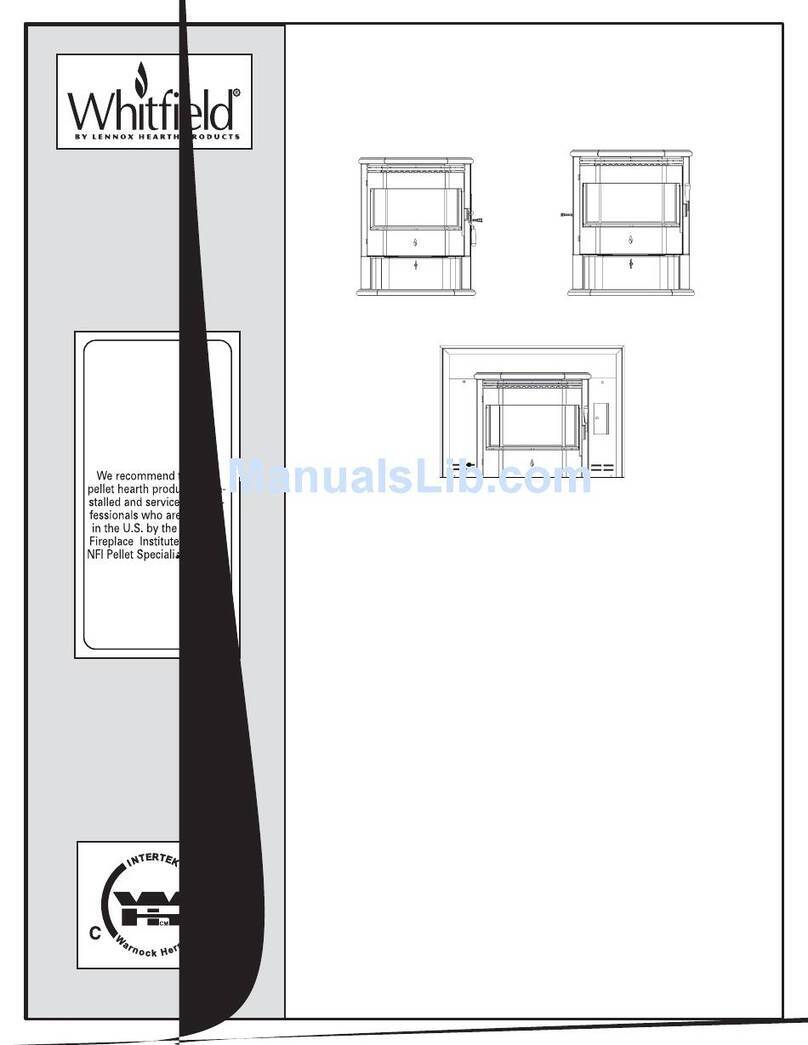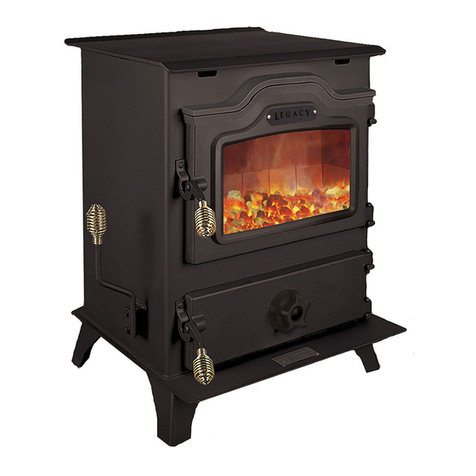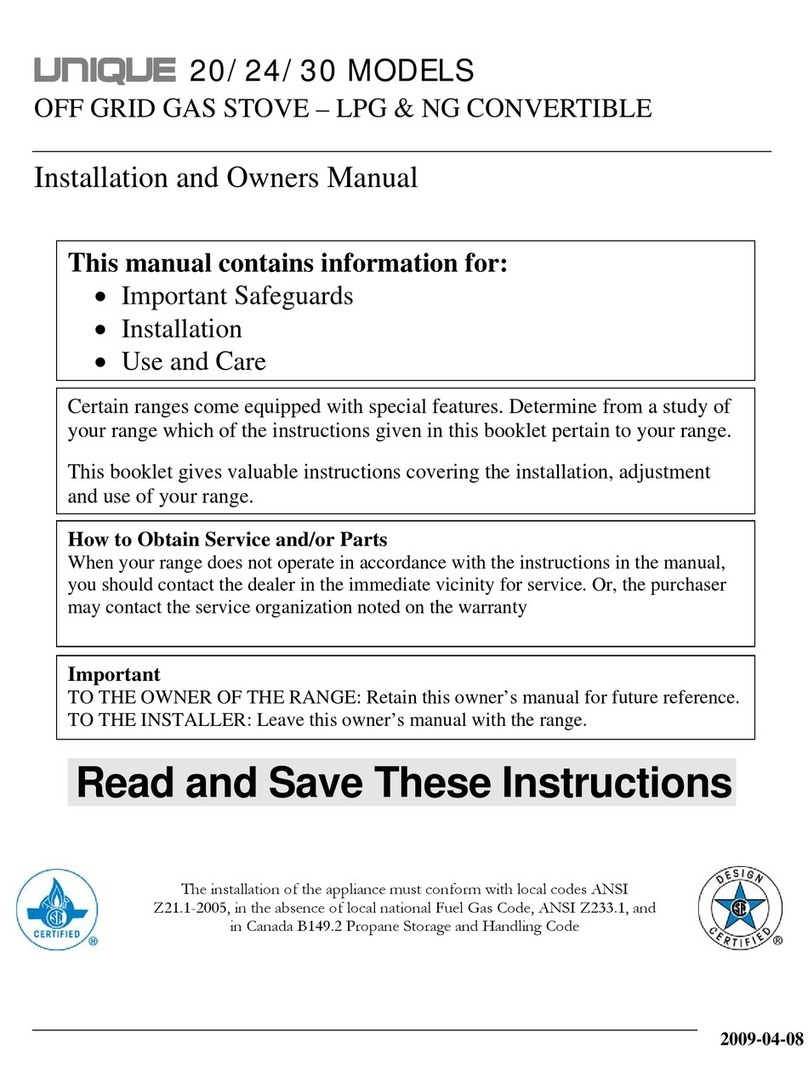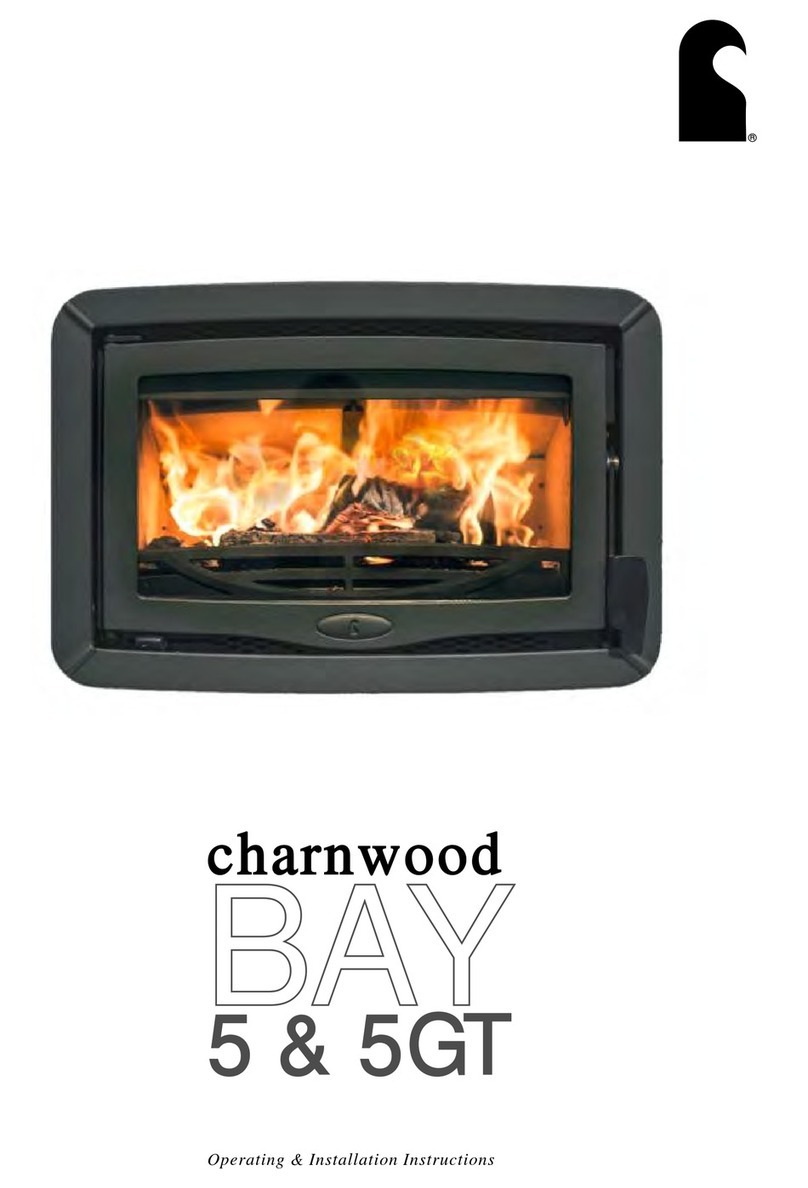
2
stop the feed during high temperatures to allow the heater to cool. A flashing RED will indicate high operating
temperature. AC power outage will stop external thermostat function if the optional battery is connected allowing the
heater to run continuously while AC is out.
Common operating problems:
(Refer to installation manual and repair manual for additional information regarding specific component replacement
and testing).
Basic tools required for troubleshooting - Multi Volt/Ohm Meter, standard and phillips screw drivers, standard jewelers
screw driver (fan speed adjustments on main control board).
No power - Power is provided by both AC and DC supplies. There are two replaceable fuses located near the power
connections. They are identified as Main (1 amp) and Ignitor (5 amp). If AC power is present to the main control
system a LED will be lit on the OFF button. If DC power is present a GREEN LED will be lit on the control panel.
Quick Testing -
1) Check AC power with volt meter at wall socket - 115VAC.
2) Check DC power at battery - 12VDC.
3) Remove fuses and check continuity with OHM meter. Blown fuses can be cause by voltage spikes (lightning,
power company). If fuse is found blown, replace only once and retest. If the fuse blows again further
troubleshooting is required before further fuse replacement.
Start up:
No fuel - Fuel located in the hopper is feed by a auger from the hopper bottom up to the shoot which directs the pellets
into the burn pot. The feed motor is controlled by the main control system and on models EF3801B, 5001B, and
5001U-B a hopper safety switch (EF4001-B auger can not be accessed from the hopper door). The switch will disable
the feed system if the hopper lid is open. The switch is located on the upper right hopper vertical panel and is
accessed through a small panel. Fuels is only feed in Low to High operating modes and requires “priming” auger. If
hopper is out of fuel, cycle from OFF to LOW several times to allow pellets to feed into burn pot.
Quick Testing -
1) Confirm hopper lid is sitting on the switch arm and the arm is closing. With hopper lid open, push the switch arm
down and listen for click noting switch closure. With heater cold, and lid open, push switch arm down, push Low and
the feed motor should start to turn.
2) Confirm feed motor is not jammed by emptying hopper and verifying a foreign object has not be caught. Remove
top cover from feed tube from inside hopper if there is any question. If the feed motor is mechanically jammed, the
control system has a built in circuit breaker. The breaker will require a reset by cycling from OFF to LOW. Do not
recycle more than three times so the circuit does not become damaged by overheating.
3) Pellets Jammed in feed shoot (above burn pot). Remove all jammed pellets and clean shoot with scraper.
Ignitor does not heat up - The ignitor has a separate 120VAC circuit which includes a fuse, relay, and ignitor. This
circuit is activated by the main control board via a 12VDC wire harness lead. When the main control call for start the
12VDC circuit is closed sending 12VDC to the relay. As the relay closes, the 120VAC circuit is completed and the
ignitor begins to heat. As noted in prior section, if 120VAC power is not available the heater will still start the fan and
feed if 12VDC is connected allowing a manual start with starter and match light.
Quick Testing -
1) Inoperative ignitor most likely have a blown fuse. Remove the 5 amp ignitor fuse and test with OHM meter.
Replace if blown. As noted before if fuse blows again then further testing is required.
2) Testing ignitor requires access to the relay located near the main board assembly. Access is through the lower
right pedestal for the 3801/5001, junction box on the 4001 insert, and lower right cabinet for the 5001U. Remove
the power to the unit. Unplug the ignitor lead from the relay and the neutral circuit. Using the OHM meter check for
continuity between the two leads. If the circuit is open the ignitor has failed. If the circuit is complete check one
lead and then ground the other lead to the ignitor base. If circuit is complete ignitor has failed. A grounded circuit
will cause the fuse to blow.
3) If ignitor check out, remove the harness leads to the relay and using the volt meter set to 20VDC, confirm 12VDC






